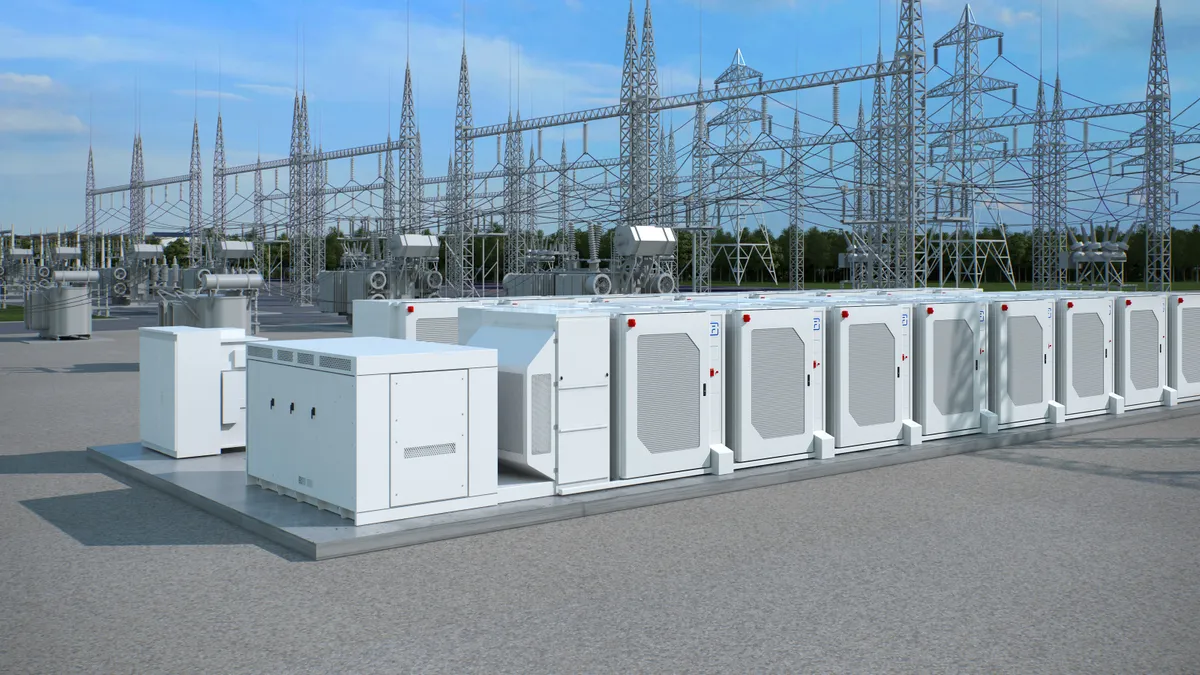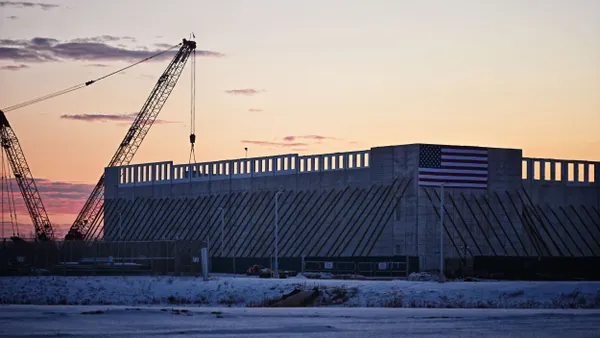Dive Brief:
-
Storage company Fluence was selected for 800 MW, 2,300 MWh worth of projects for its newest energy storage technology "stack," equipped with a modular building block "cube" and machine learning, the company announced Tuesday.
- "In our view, storage is at the center of any goal to decarbonize electric grids," Brian Perusse, Fluence's vice president of strategic marketing, told Utility Dive. As renewables grow cheaper than coal and thermal assets, "adding storage allows unlimited penetration of renewables into any market," he added.
-
Enel, LS Power, SPower and Siemens are among the customers for the system, which will start to be delivered at the end of the year, Fluence said. The new projects amount to nearly half of Fluence's current 2.1 GW portfolio of deployed and awarded projects.
Dive Insight:
The demand for the technology is indicative of a rapidly growing storage market, where a large number of independent power producers and utilities are building and installing storage systems, Jason Burwen, vice president of policy at the Energy Storage Association (ESA), told Utility Dive
"We never want to lose sight of the fact that businesses have the running room to do these kinds of innovations when they have a lot of customers and demand," he said, adding that it's important to reduce policy barriers to deploying these assets.
Over the past decade, the costs of battery storage systems have dropped by around 90%, according to Perusse, most of which comes from reductions in the cost of the battery itself. As a result, a larger portion of the system costs are tied to non-battery aspects.
"By moving to a standardized process, you're allowed to eliminate the other non-battery costs, and we're seeing significant cost reductions," upward of 25% compared to existing costs for some systems, he said.
Fluence did not provide details on the specific projects employing the new technology, but Perusse said some have already started construction and delivery of the systems will start at the end of this year.
The stack includes three components: digital intelligence that can connect storage systems to energy markets and manage battery degradation, an operating system, and a standardized, modular "cube." That same core can serve both utility-scale projects, as well as a 1 MW project at an industrial site without any redesign, Perusse said.
The technology provides the benefits of both mass production and customization, Fluence CEO Manuel Perez Dubuc said in a blog post.
As the storage industry gains more experience, stakeholders will begin to focus more on highly customizable products, according to ESA's Burwen.
"From a business profit standpoint, members of the battery storage industry are going to be wanting to get to the point where you have reasonably standard offerings, where folks don't really have to do a whole lot of redesign for each given site and each given project," he said, adding that this will also allow developers to streamline timelines and reduce costs.
"Often the conversation on innovation is [about] lowering costs through things like technology breakthroughs. But business process improvements… historically have been very important in driving costs of energy storage and other energy technologies down," he added.















